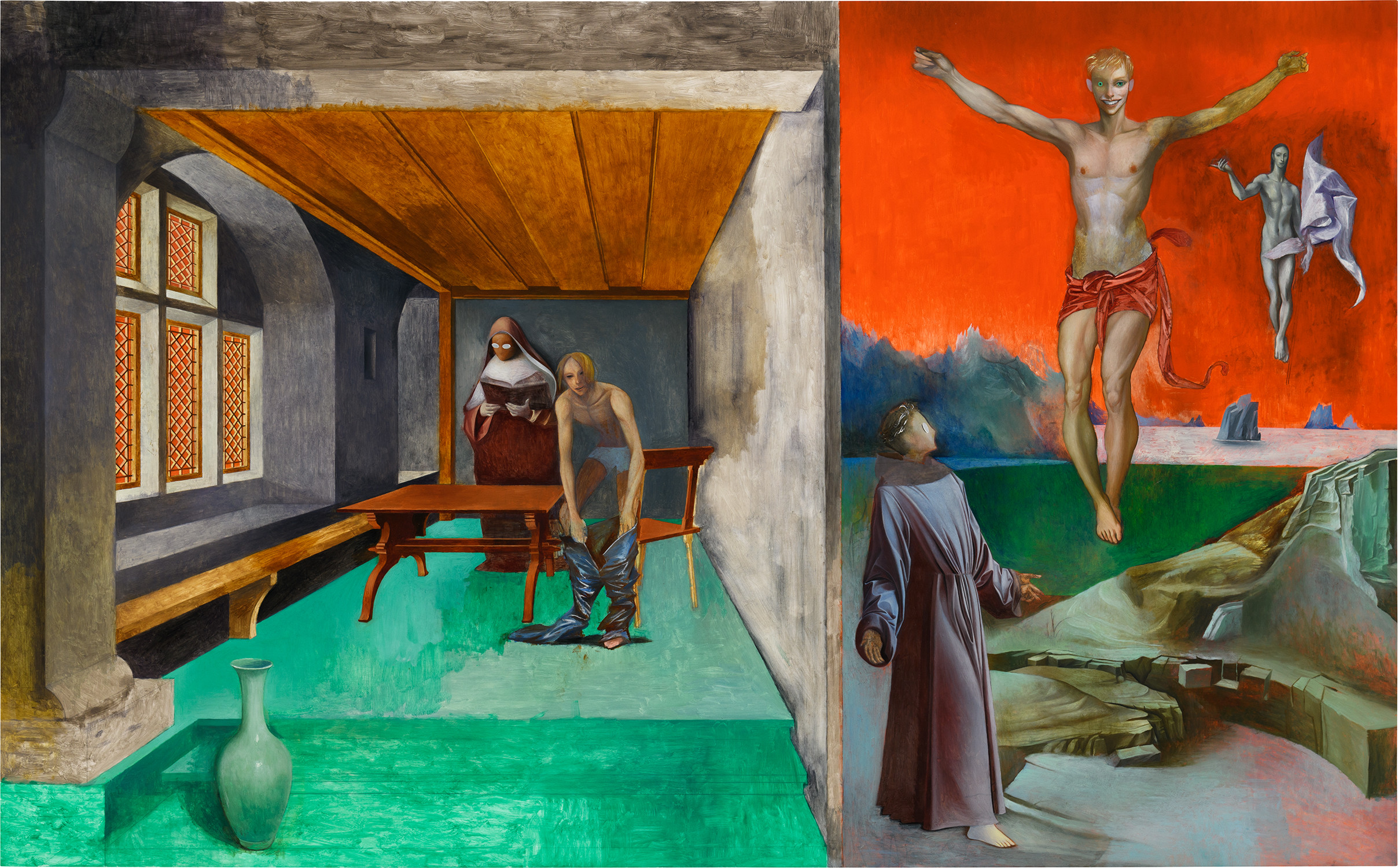
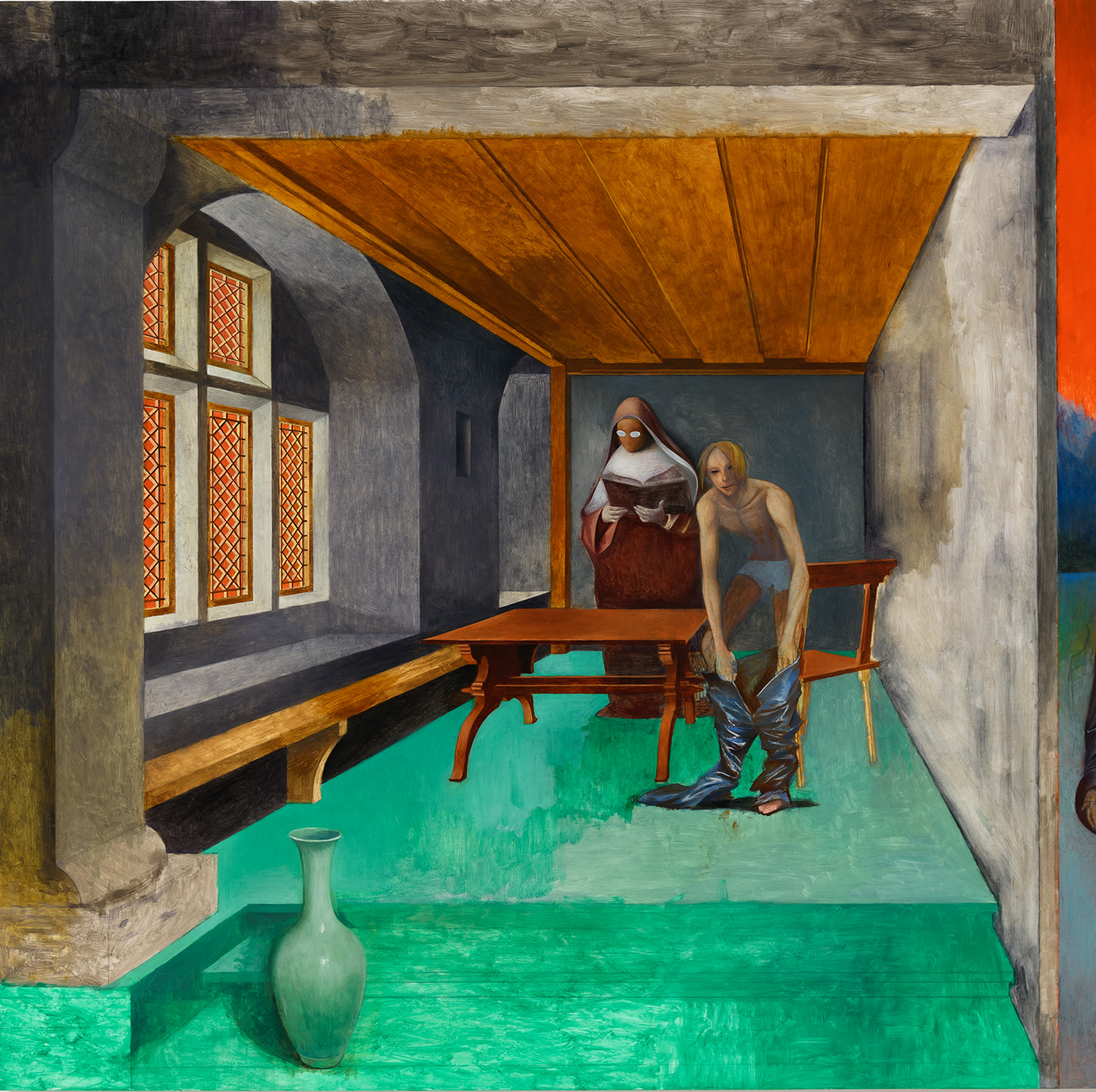
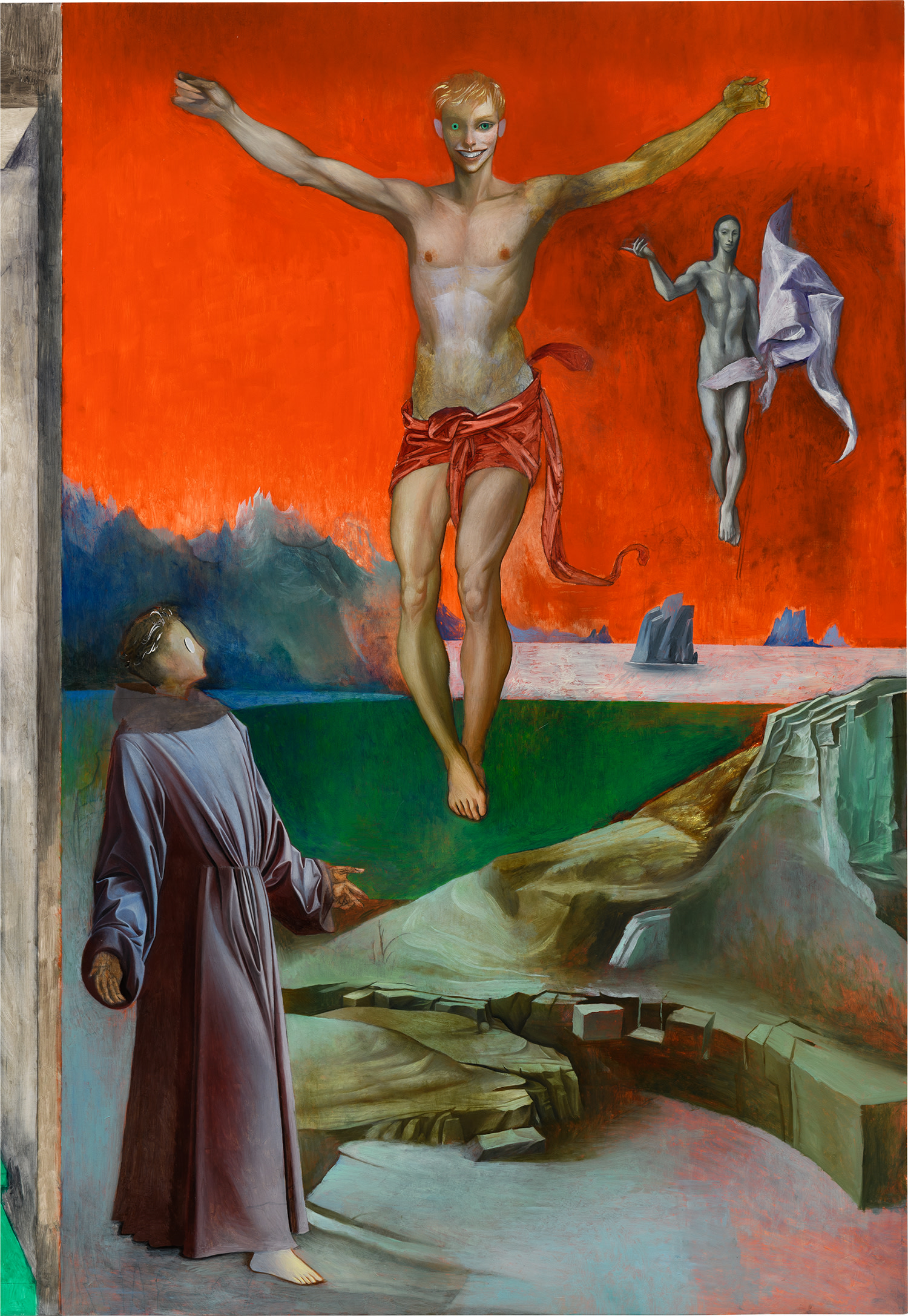
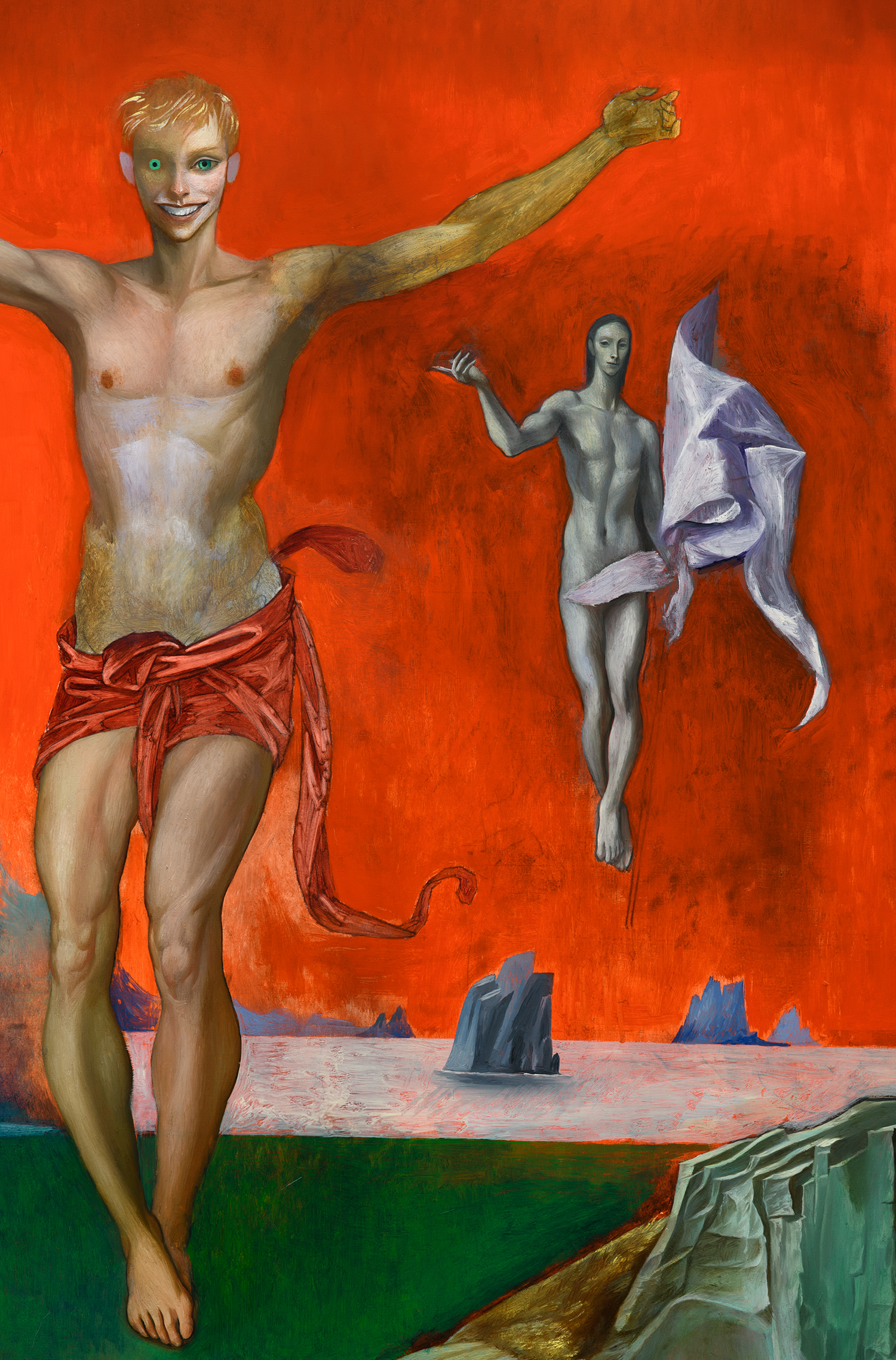
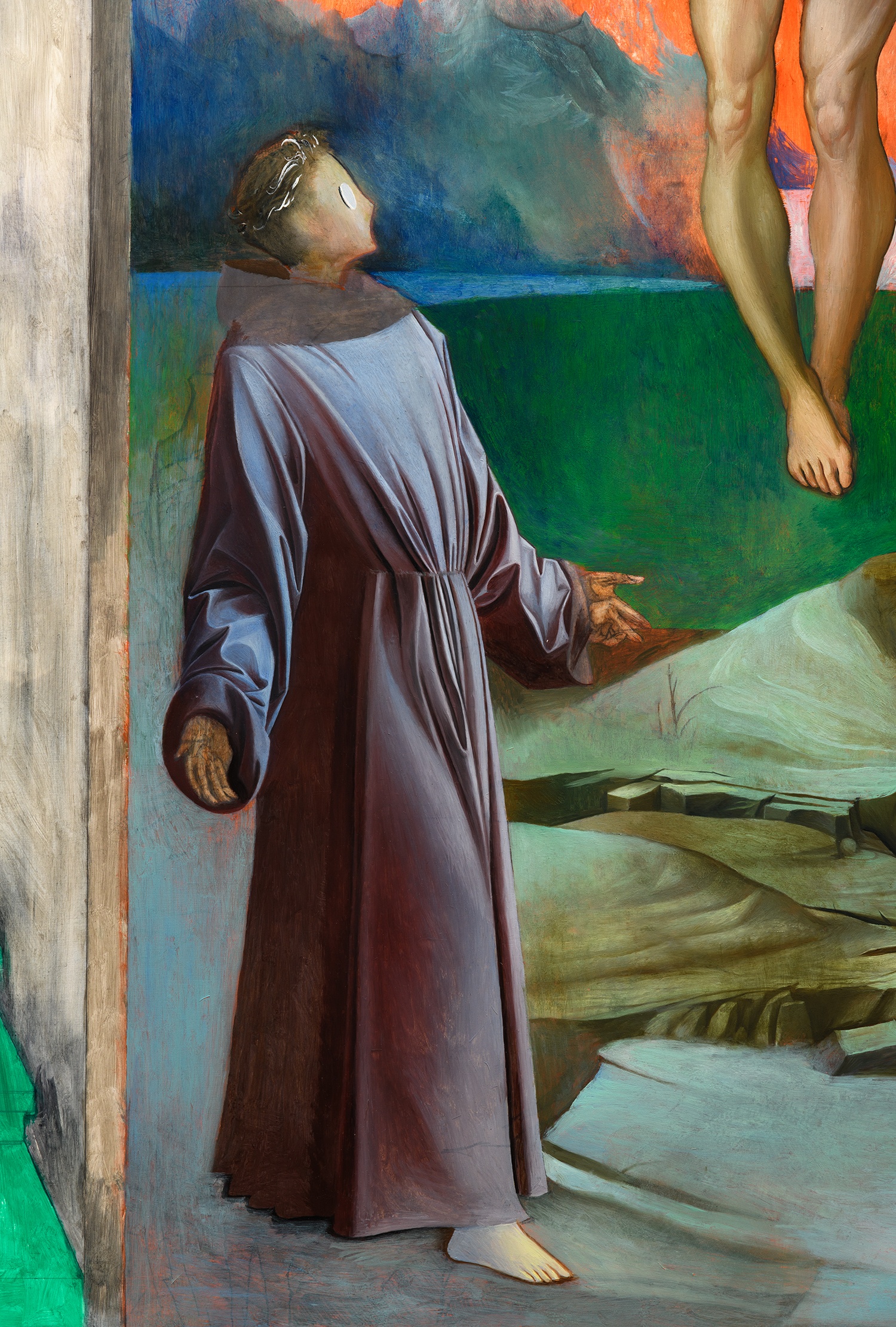
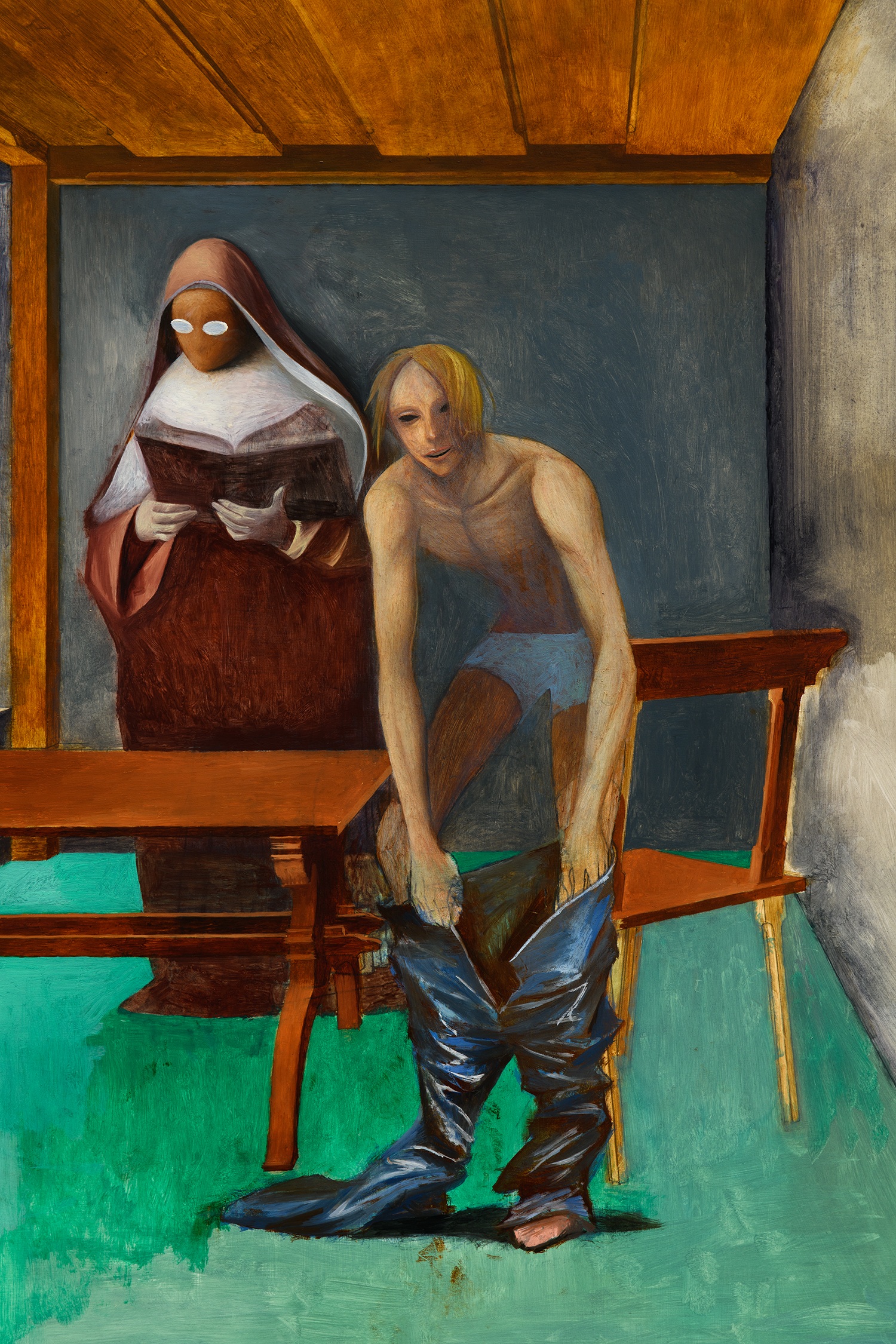
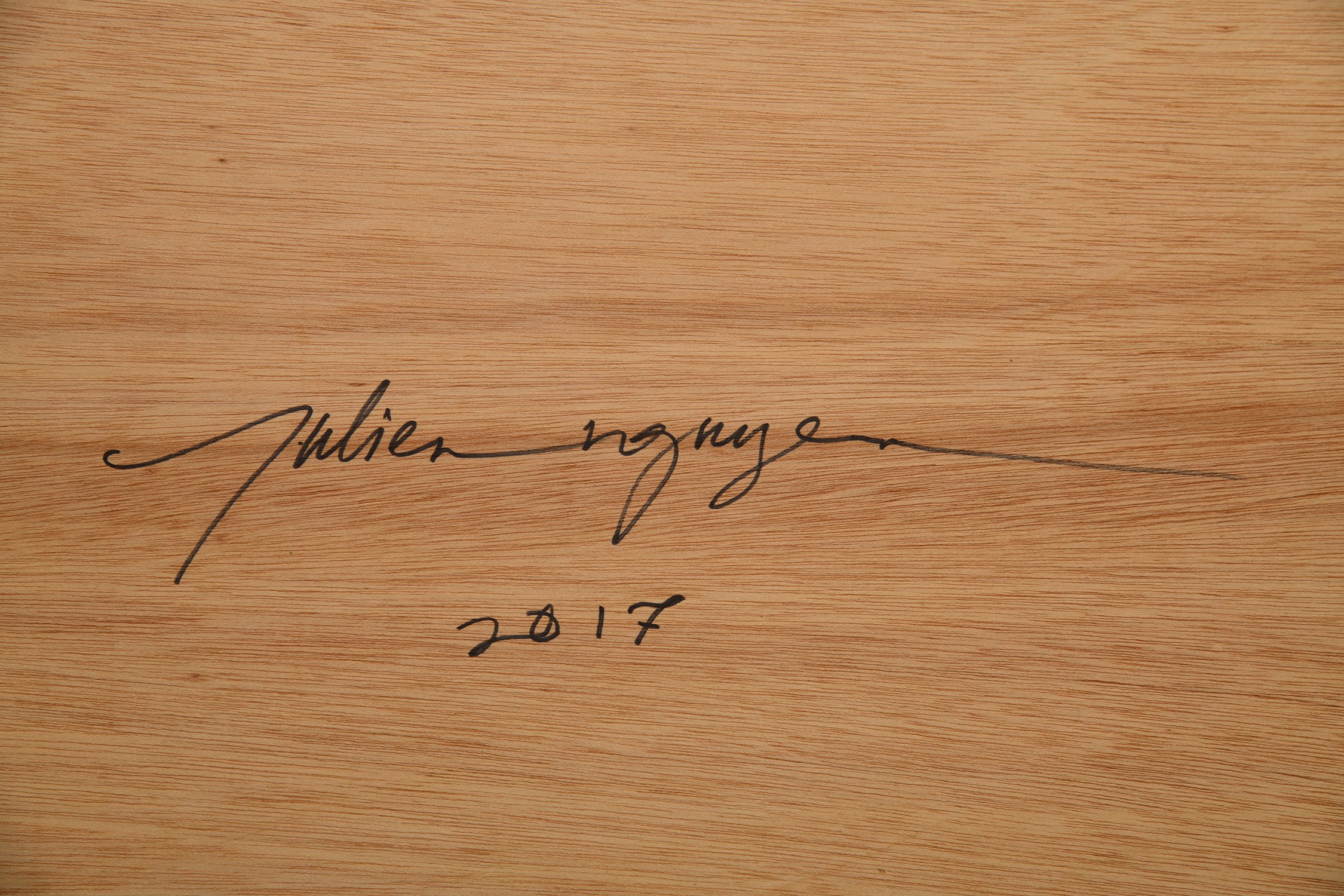









6
Julien Nguyen
Faust II
signed and dated 'Julien Nguyen 2017' on the reverse
oil on panel
113.3 x 182.8 cm. (44 5/8 x 71 7/8 in.)
Painted in 2017.
Further Details
Full-Cataloguing
Julien Nguyen
Julien Nguyen (b. 1990) was born in a Vietnamese-American artist, and lives and
works in Los Angeles. As a teenager growing up in Washington D.C. and during the
dawn of the Internet Age, Nguyen formed the basis of his aesthetic by playing video
games like Civilization III, Age of Empires and StarCraft, each with their own highly
stylized depictions of their respective worlds.
Nguyen’s work was included in the 2017 Whitney Biennial and has been the subject
of one-person exhibitions at the Swiss Institute in New York, Kunstverein München
in Munich, and the Contemporary Arts Center in Cincinnati.